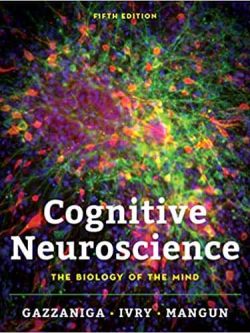Specifications
| book-author | Sue E. Huether |
|---|---|
| file-type | |
| isbn10 | 1771721197 |
| language | English |
| publisher | Elsevier |
| isbn13 | 9781771721196 |
Book Description
**”Understanding Pathophysiology (Canadian Edition)”** by Sue E. Huether is a comprehensive textbook that provides an in-depth exploration of pathophysiology, focusing on the mechanisms of disease and how they affect the human body. This edition is specifically tailored to the Canadian healthcare context, making it an essential resource for Canadian nursing and healthcare students.
### **Key Features and Content Overview:**
#### **1. Foundations of Pathophysiology**
– **Introduction to Pathophysiology:** The textbook begins with an introduction to the principles of pathophysiology, discussing the body's normal physiology and how diseases alter these processes. It covers the basic concepts essential for understanding disease mechanisms, such as homeostasis, cellular adaptation, and the inflammatory response.
– **Disease Mechanisms:** Offers a detailed explanation of the cellular and molecular mechanisms underlying diseases. This section helps students understand how various factors, including genetic, environmental, and lifestyle influences, contribute to the development and progression of diseases.
#### **2. Canadian Healthcare Context**
– **Canadian Health Focus:** Tailored to meet the needs of Canadian healthcare education, the book includes specific information about diseases prevalent in Canada, healthcare policies, and clinical guidelines followed in the Canadian healthcare system. This contextual focus helps students relate theoretical knowledge to real-world practice in Canada.
– **Case Studies and Examples:** Incorporates Canadian case studies and examples that illustrate the clinical application of pathophysiological concepts. These real-life scenarios enhance students’ understanding of how pathophysiology is applied in everyday healthcare settings.
#### **3. Detailed Systems Approach**
– **Organ Systems Pathophysiology:** The textbook is organized by body systems, with chapters dedicated to the pathophysiology of each system. This includes the cardiovascular, respiratory, gastrointestinal, nervous, endocrine, musculoskeletal, and integumentary systems, among others.
– **Common Disorders and Diseases:** Each chapter provides an overview of common diseases and disorders affecting the respective organ system, discussing their pathophysiological basis, clinical manifestations, diagnosis, and treatment options. This approach allows students to develop a comprehensive understanding of how diseases affect different parts of the body.
#### **4. Clinical Manifestations and Diagnostic Methods**
– **Signs and Symptoms:** Focuses on the clinical manifestations of diseases, helping students recognize signs and symptoms associated with various pathophysiological conditions. This knowledge is crucial for healthcare professionals to diagnose and manage diseases effectively.
– **Diagnostic Techniques:** Discusses various diagnostic methods and technologies used to identify diseases, including imaging techniques, laboratory tests, and genetic screening. This section helps students understand the tools available for disease diagnosis and monitoring.
#### **5. Integrated Learning Tools**
– **Learning Objectives and Key Terms:** Each chapter begins with clear learning objectives and key terms, providing a roadmap for students to focus on critical concepts and terminology essential for understanding pathophysiology.
– **Review Questions and Practice Problems:** Includes review questions and practice problems at the end of each chapter to reinforce learning and test comprehension. These exercises are designed to challenge students and encourage critical thinking.
#### **6. Visual Aids and Illustrations**
– **Detailed Illustrations:** Features numerous diagrams, flowcharts, and illustrations that depict complex pathophysiological processes and disease mechanisms. These visual aids help students visualize how diseases affect the body and enhance their understanding of the material.
– **Tables and Charts:** Provides tables and charts summarizing key information, such as the differences between similar diseases, risk factors, and treatment modalities. These tools serve as quick references for students to review important concepts.
#### **7. Focus on Clinical Application**
– **Clinical Correlations:** Highlights clinical correlations throughout the text, linking pathophysiological concepts to clinical practice. This feature helps students see the relevance of their studies and prepares them for real-world patient care.
– **Nursing and Healthcare Implications:** Discusses the implications of pathophysiology for nursing and healthcare practice, emphasizing the importance of understanding disease mechanisms in providing effective patient care. This focus is particularly beneficial for nursing students and healthcare professionals.
#### **8. Patient-Centered Approach**
– **Patient Education:** Addresses the role of healthcare providers in educating patients about their conditions, including the importance of understanding their diagnosis, treatment options, and self-care strategies. This patient-centered approach emphasizes the importance of communication and empathy in healthcare.
#### **9. Online and Supplemental Resources**
– **Digital Resources:** Accompanied by online resources such as interactive quizzes, animations, and supplemental readings. These resources provide additional opportunities for students to engage with the material and reinforce their learning.
– **Instructor Support:** Offers resources for instructors, including lecture slides, test banks, and teaching guides, to facilitate effective teaching and learning in the classroom.
**”Understanding Pathophysiology (Canadian Edition)”** by Sue E. Huether is an invaluable resource for students and professionals in the healthcare field. With its comprehensive coverage, Canadian context, and focus on clinical application, this textbook equips learners with the knowledge and skills needed to understand and manage diseases effectively in a healthcare setting.









Reviews
There are no reviews yet.